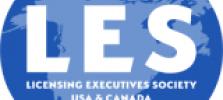Method to Detect and Quantify In Vivo Mitophagy
This technology includes a transgenic reporter mouse that expresses a fluorescent protein called mt-Keima, to be used to detect and quantify in vivo mitophagy. This fluorescent protein was originally described by a group in Japan and shown to be able to measure both the general process of autophagy and mitophagy. We extended these results by creating a living animal so that we could get a measurement for in vivo mitophagy. Our results demonstrate that our mt-Keima mouse allows for a straightforward and practical way to quantify mitophagy in vivo.

